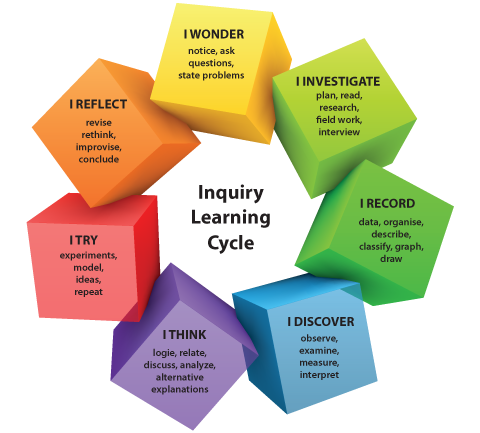Month: January 2018
Playful Inquiry: try this anywhere. Robyn Stratton-Berkessel TEDxNavesink
I mention in a previous post the importance of asking the right question. On this video, Robyn talks about the wonders of asking the right questions and how it can inspire people and students to open up instead of answering with one sentence. As I stated before, the right question can spark the fire in some students that will engage them in a topic that they would not have been interested if taught they old way.
Finding the right question can be challenging, but it is a challenge that will bring you and your students a pleasant experience!
The video can be found here
Inquiry in kindergarten: Amanda Baldwin at TEDx Rocky View Schools ED
This TEDx talk was insightful because I do not have experience with Kindergarten. I have posted about and researched Inquiry-based classrooms for older grades, so naturally I did not know how Inquiry would look like in a kindergarten setting. It is interesting to hear how the younger students can engage in Inquiry.
If students are introduced to Inquiry at a young age, they are more likely to enjoy learning. The only problem I can think of is that students that engage in Inquiry learning at a young age might not have the same opportunity once they move on to the next grade. The school should be consistent with Inquiry-based classrooms to allow these young students to keep developing their cognitive skills throughout their school lives.
The video can be found here
Inspired Issue Brief: Inquiry-Based Teaching
I would like to invite you to read this article if you are wondering how inquiry inspire students to learn more, how it can narrow the gap between high achievers and low achievers, and how it can benefit second language learners and special needs students.
This article shares a variety of studies explaining how inquiry benefits different groups of students. All these studies were done in the United States, however, it is safe to assume that the information can be apply to classroom elsewhere. These studies show that inquiry can be use to bring equity to a classroom and it allow students and teachers to enjoy the learning process.
The article can be found here
10 Tips For Launching An Inquiry-Based Classroom
Here you can find 10 more tips for launching an Inquiry-based Classroom. The most important part about inquiry is asking the right question. As I learn more about Iniquiry- based classrooms, I find that asking the right question is the question that allows students to come up with multiple answers and spark their curiosity. Moreover, what i felt after reading the article is that its time to move on from the old methods of teaching because the time of just telling students what they need to know it over; it is now time for students to learn how to take ownership of their own learning.
Check out this article by clicking here
Classroom Examples
Talking about inquiry and reading about it is the first step to understanding how to implement it in your classroom. The second step would be researching and learning about how other teachers have implemented inquiry on a variety of topics; this will give you an idea on how an Inquiry-based lesson/unit would look like. I found these examples very helpful as it shows me how inquiry can be used to teach different age groups learning the same subjects.
To read and see examples of inquiry please click here
What are some critical perspectives of Inquiry-based Learning
Inquiry-based learning is not an universal philosophy that every teacher wishes they could implement. A group of teachers are “set on their ways” and believe there is no merit in letting students choose their learning path. This group of people believe that students should learn a set of concepts without engaging in critical thinking.
To learn more about this topic please click here
Inquiry Learning Cycle
This is an easy way to introduce Inquiry learning to students! This image represents a step by step on how to engage in inquiry learning. The steps are simple enough that students can follow them on their own; however, as i mention before, sometimes we take for granted what students might be able to do and failed to access a skill that students might need to work on. Before engaging in inquiry learning, it is imperative for students to have the skills mention on this image.

What the Heck Is Inquiry-Based Learning?
Curiosity is the key word in this article. Curiosity is not an easy thing to spark in young students, however, it is the key to bring Inquiry-based learning to your classroom. The author of this article gives a brief definition of what is Inquiry-based learning and gives the “4 steps” of inquiry based learning.